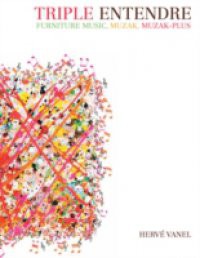Triple Entendre discusses the rise and spread of background music in contexts as diverse as office workplaces, shopping malls, and musical performance. Herve Vanel examines background music in several guises, including Erik Satie's "Furniture Music" of the late 1910s and early 1920s, which first demonstrated the idea of a music not meant to be listened to, and the Muzak Corporation's commercialized ambient music that became a predominant feature of modern life in the 1940s. Vanel's discussion culminates in the creative response of the composer John Cage to the pervasiveness and power of background music in contemporary society. By examining the subterranean connections existing between these three formulations of a singular idea, Triple Entendre analyzes and challenges the crucial boundary that separates an artistic concept from its actual implementation in life.

